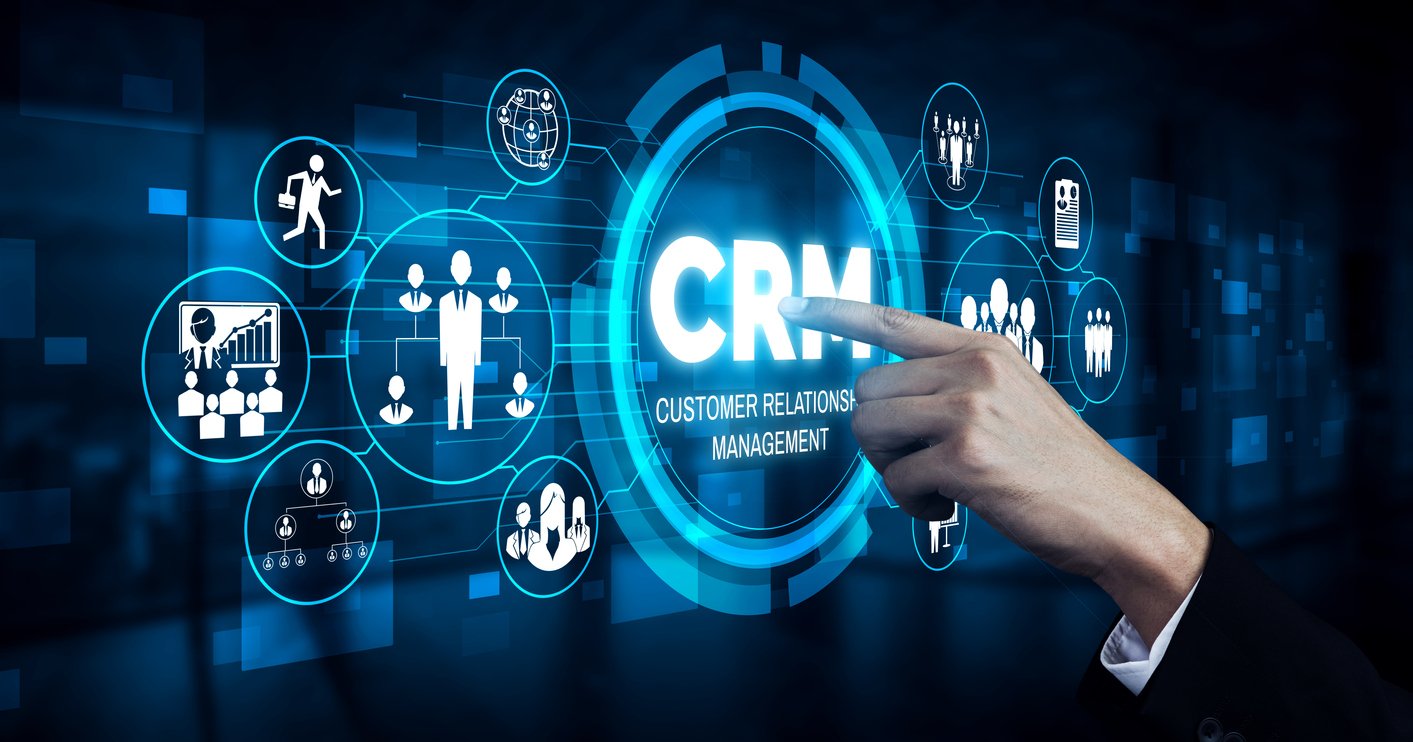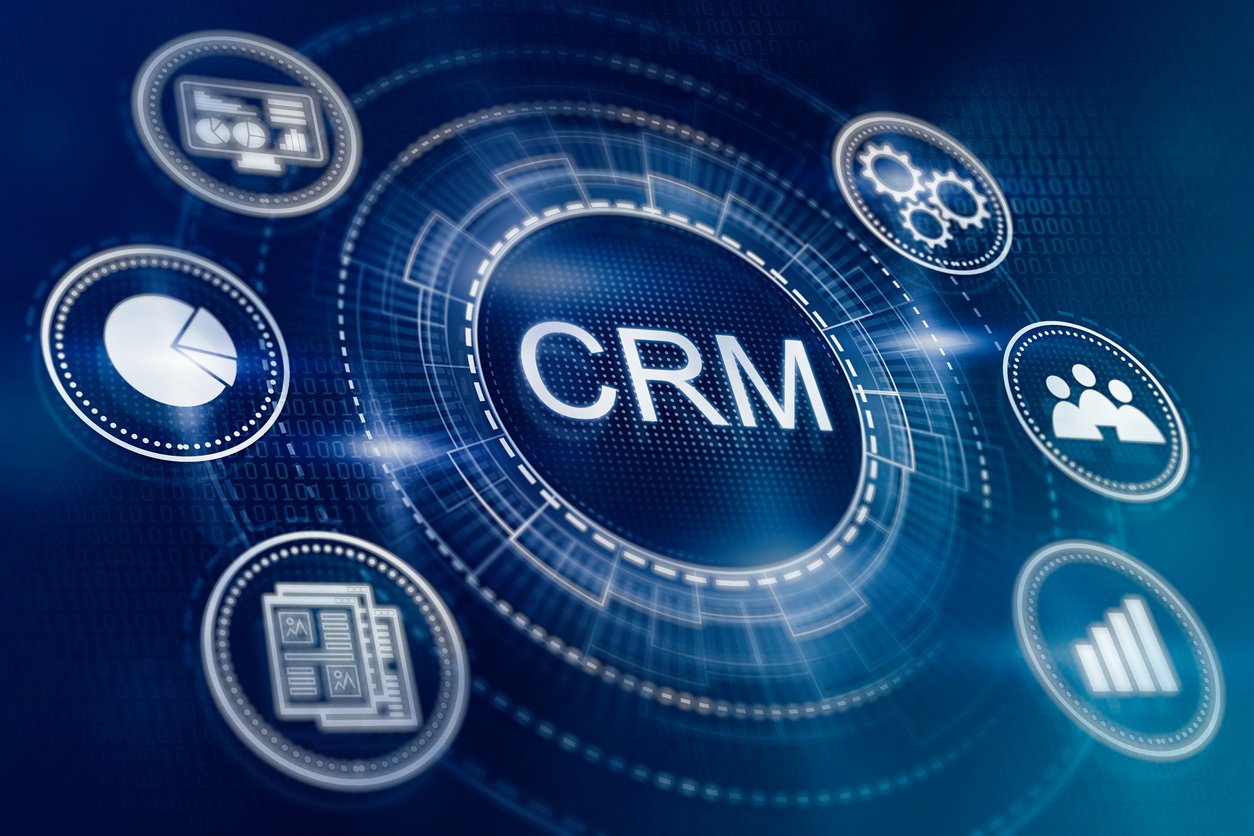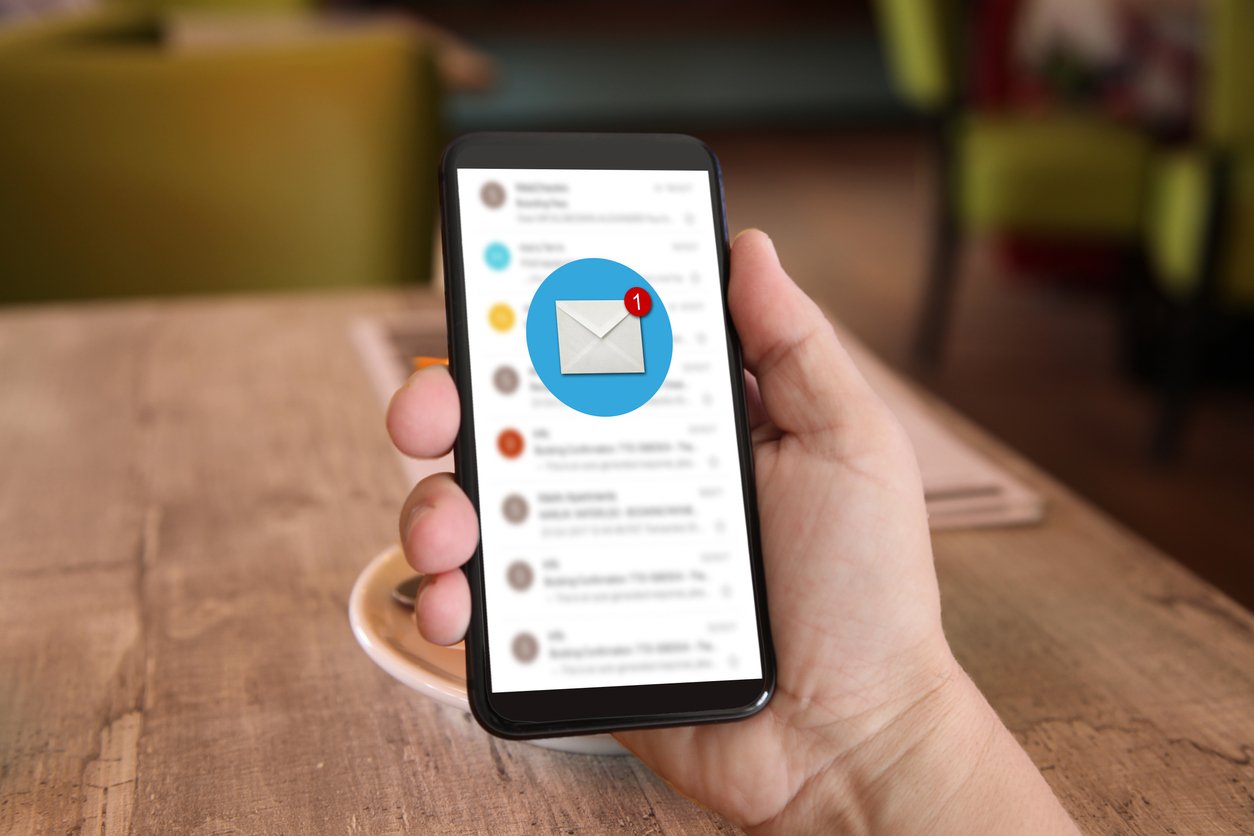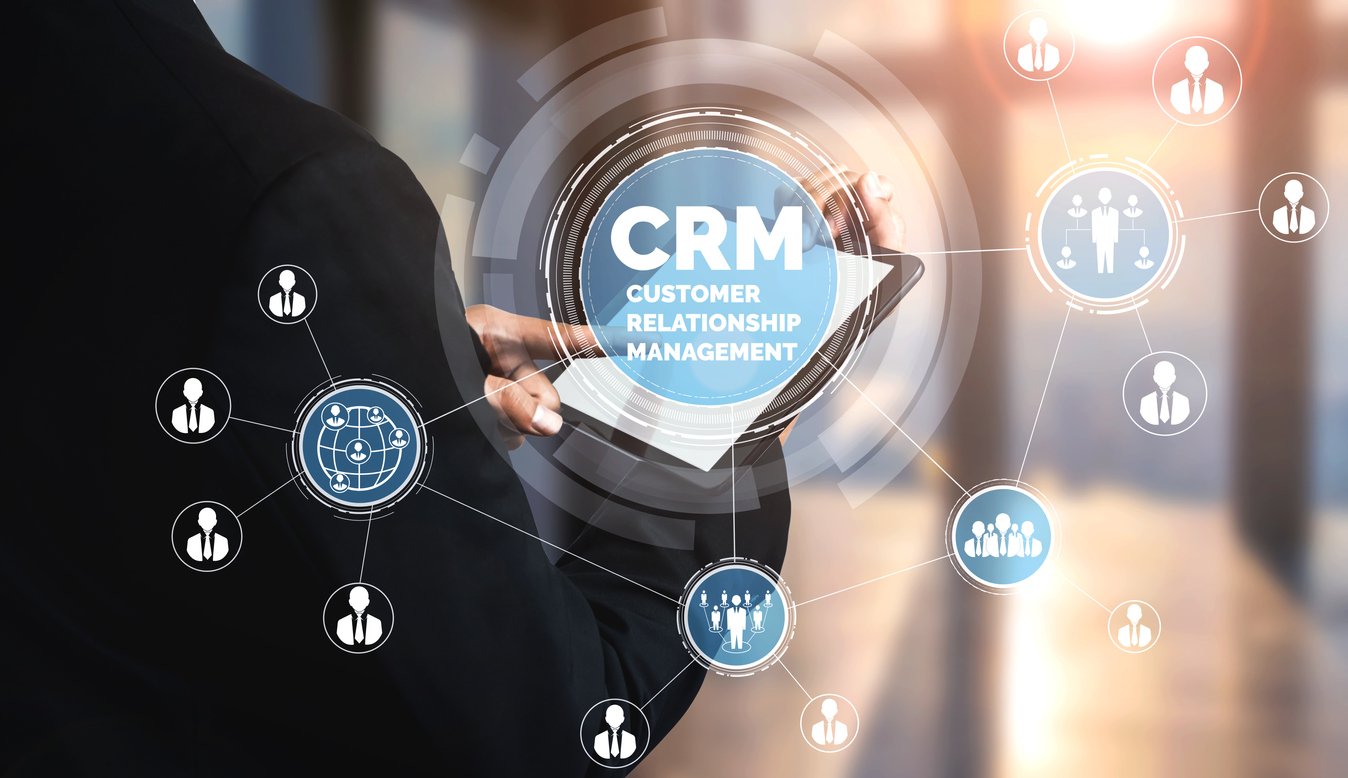
8 Best Advice You Could Ever Get About CRM Email Integration
 Updated on
Updated on
 By Katie Bowman
By Katie Bowman
Katie Bowman
Katie has extensive experience in customer service and enjoys the opportunity to help others. She is committed to providing high-quality service and d...
learn more
Katie Bowman
Katie has extensive experience in customer service and enjoys the opportunity to help others. She is committed to providing high-quality service and d...
Table of Contents
Table of Contents
Most companies have a bit of a problem with email:
They're sending a tonne.
Now, that's not a problem in and of itself, but most businesses don't even understand just how many emails are going back and forth in their organization.
Let's break it down a sec with some numbers (I know, sorry):
333 billion emails are sent and received across the world every day (seriously). That number is insane.
But there's something even more enlightening:
Every single one of your employees is sending and receiving more than 120 emails each day. That's 180,000 emails a month for a 50-employee organization.
Okay, enough with all the 1s and 0s. What does it all mean???
It means that if you're still using a regular old standalone email client, sitting there all on its lonesome without any connections (integrations), then you plain and simple don't have a lot of visibility and control over those 180k emails.
Hence CRM email integration, and hence why you're here.
But you're hungry for answers, aren't you, you insatiable little gremlin? You want to know whether you really need to integrate your emails, which software to choose, and how to do the damn thing properly.
Well buckle up boy, we've got some answers for ya.
CRM Email Integration - What The Heck Is It?
CRM email integration is actually a pretty simple matter, at least conceptually.
Look at it like this:
You've got your CRM doing all the things a great CRM does:
- Storing customer data
- Serving as a platform for storing interaction records
- Providing time-saving automation
- Generating sales reports and dashboards
Sitting in another browser tab, you've got your email tool, doing what it does (sending and receiving emails, basically).
CRM email integration connects the two platforms together. More specifically, it allows you to access your emails inside of your CRM, meaning you can more or less just leave old Gmail to its own devices and manage all of your sales emails inside of the one interface.
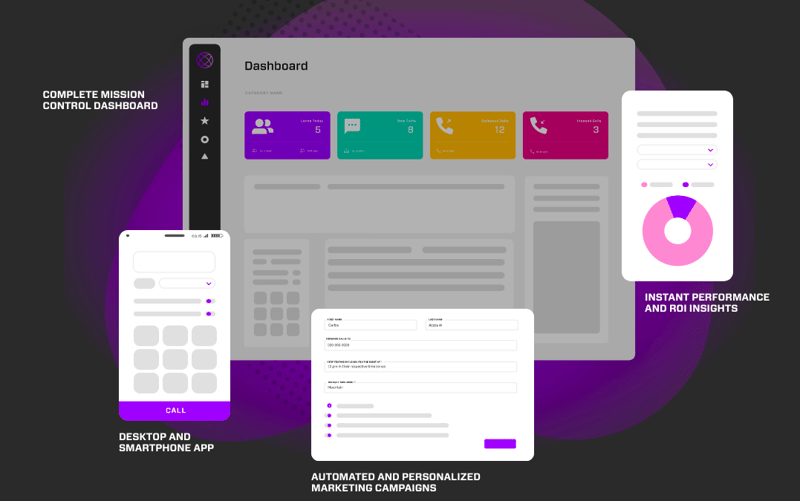
A CRM with email integration also (generally) provides further insights into email performance, such as email open tracking, response rates for templates and campaigns, and notifications for important actions such as when your prospect clicks on a link in your message.
Told you it was fairly straightforward. If you're unconvinced about the need for CRM software with email integration though, then let me wow you with the following sales pitch:
Why You Need CRM with Email Integration
There's nothing worse than having to sit through a long sales demo before getting to the good stuff (good tip for your sales team by the way).
1. Pace
Pace matters. Responding to leads within 5 minutes gives you a 10x increase in conversion. That's 10x, not 10%.
Managing fully-fledged email outreach campaigns with traditional email clients is pretty much impossible.
I mean, you're wasting a tonne of time if you are. There's no way you can achieve a reasonable pace without being able to:
- Create and use templated emails
- Run automated email campaigns
- Push out a mass email send in a single click
These are all features provided by your typical CRM email integration service.
2. Conversion
When you have your email set up inside your CRM, you're way more likely to convert each lead.
This is in part due to the benefit we just discussed, pace. When your team can run faster, they'll sell more (as much as 50% of sales go to the first company to respond).
It's also because you have a lot more visibility on your email performance, meaning you can make changes to your email campaigns to improve conversion).
Which brings me to my next point...
3. Better Insights
A CRM with email integration gives you access to a bunch of insights, like these 5:
- Email open rates
- Email click-through rates
- Email effectiveness (through automated A/B testing)
- Response rates
- Notifications when a prospect opens or clicks on a link in your email
Having this data on hand allows savvy sales teams to determine which emails are performing best and why, and to make alterations to email copy accordingly.
They can also give insight into individual rep performance if each salesperson is sending their own emails (rather than everyone using the same templates).
4. Manage Inbound and Outbound
One of the things that separate CRM software with email integration from email marketing platforms is that you can manage both inbound and outbound email.
Where bulk-send marketing email platforms are designed for, well, just that, CRMs with email integration give you an email inbox as well.
5. Automation
Ah, automation, the boon of our existence.
This is perhaps the greatest benefit afforded to sales teams by the adoption of CRM email integration:
The ability to put email sequences on repeat, and without even having to lift a finger until you get a response.
With automated email sequences, sales reps can throw prospects into a campaign of say, 7 emails across 7 weeks, each of which will be sent automatically until the sequence is interrupted by a response.
If you want to get a little more complex, some CRMs even offer drip campaigns using both email and SMS, allowing reps to take a multimedia approach.
6. A Single Point of Truth
The problem with having your email client and CRM (and other software solutions) disconnected is that you don't have a single point of truth.
That is, your data is everywhere, and trying to recall important customer information is like finding a needle in a haystack of software logos.
A CRM with email integration fixed that, at least by allowing you to search inside your CRM and pull up data from both your email and from your contact notes simultaneously.
7. Connect to Your Marketing/Sales Tech Stack
Lastly, CRM software with email integration typically allows you to integrate with other parts of your tech stack, such as ticket handling, business process management, or sales enablement tools.
Connecting your email client to your CRM means it's now part of that same infrastructure, with your sales CRM at the center of your tech stack universe.
8. Easier Personalization
CRM email integration eliminates the hassle of juggling between your CRM and inbox by seamlessly connecting your email clients to your CRM data. With contact details, past interactions, and preferences readily available, you can personalize emails with:
|
Strategies |
Description |
|
Targeted Greetings, and Salutations |
Address customers by name, creating an instant sense of familiarity. |
|
Relevant Content and Offers |
Tailor email messages to individual needs and interests, based on their purchase history or browsing behavior. |
|
Personalized Subject Lines |
Grab attention with subject lines that speak directly to their concerns or aspirations. |
This level of personalization fosters deeper engagement and trust, ultimately leading to higher conversion rates and customer satisfaction.
Free CRM with Email Integration - Why You Should Stay Away

At this point, you may be tempted to side with a free CRM with email integration.
Here's a tip:
Don't.
Look, free CRMs can be great, and they offer a good entry-point into the world of customer relationship management, but that's about it.
They typically aren't super sophisticated. For example, they might not even do email integration, or if they do, insights may not be as powerful as the ones we've just mentioned.
Here's why you should proceed with caution:
- Limited Functionality: Don't expect the bells and whistles. Free CRMs often lack essential features like powerful email integration, insightful reporting, or automation capabilities.
- Hidden Costs: "Free" doesn't always mean free. Many "free" CRMs are simply freemium models, offering limited functionality with the expectation that you'll eventually upgrade to paid plans with higher costs than competitors. Additionally, some free CRMs require self-hosting, incurring server space and maintenance fees.
- Data Migration Headaches: Switching CRMs down the line can be a data migration nightmare. If you outgrow your free CRM and transition to a paid one, moving your data can be cumbersome and time-consuming.
- Security Concerns: Free CRMs may not offer the same level of security and data protection as paid alternatives. This can be a significant risk for businesses dealing with sensitive customer information.
So avoid free CRM software at all costs (even at no cost).
5 CRM Email Templates to Boost Sales
Before you start crafting emails, you need enough context to ensure they align with your specific goals and brand voice. Here are some of the important considerations:
- Target Audience: Who are you sending these emails to (e.g., leads, prospects, existing customers)?
- Business Stage: Are you aiming to nurture leads, convert prospects, or increase engagement with existing customers?
- Products/Services: What are you offering, and what are their key benefits?
- Brand Voice: What tone and style resonate with your audience (e.g., professional, friendly, humorous)?
Here are some sales templates to use once you align your considerations with your objectives.
Template 1: Personalized Welcome Email
Purpose: Introduce yourself, express appreciation for your interest, and provide valuable resources. The template should look something like this.
Subject: Welcome to [Your Company Name]!
Dear [Name],
Thank you for joining the [Your Company Name] community! We're excited to have you on board and can't wait to help you achieve your [goals related to your product/service].
As a token of our appreciation, we'd like to offer you [valuable resource, e.g., a free guide, exclusive discount]. This will help you get started on your journey with [Your Company Name] and learn more about how we can benefit you.
In the meantime, don't hesitate to reach out if you have any questions. We're always happy to help!
Sincerely,
The [Your Company Name] Team
Template 2: Lead Nurturing Email
Purpose: Educate prospects, build trust, and position your solutions as the answer to their challenges.
Subject: Conquering [Prospect's Pain Point] with [Your Product/Service]
Dear [Name],
As we discussed, [briefly acknowledge their specific challenge]. At [Your Company Name], we understand how this can impact [consequences of the challenge].
That's why we developed [Your Product/Service], which helps [explain how it addresses their challenge]. In fact, [mention a success story or statistic that resonates with them].
Would you be interested in a free consultation to see how [Your Product/Service] can specifically address your needs? Simply reply to this email and we'll be happy to schedule a time.
Best regards,
[Your Name]
Template 3: Proposal or Quote Follow-Up
Purpose: Reiterate the value proposition and address any concerns to encourage a decision.
Subject: Next Steps: Putting [Your Product/Service] to Work for You
Dear [Name],
I hope you had a chance to review our proposal for [Your Product/Service]. As discussed, it can help you achieve [key benefits].
Since our last conversation, I noticed you had some questions about [specific area of concern]. I've included additional information in this email to address those points.
Remember, [Your Product/Service] is also backed by our [guarantee/support policy], ensuring you get the most out of your investment.
Are you ready to move forward? Simply reply to this email and I'll be happy to guide you through the next steps.
Thank you for your time and consideration.
Sincerely,
[Your Name]
Template 4: Customer Retention Email
Purpose: Show appreciation, offer exclusive deals, and encourage continued engagement.
Subject: Thank You for Being a Valued Customer!
Dear [Name],
We're incredibly grateful for your continued trust and support of [Your Company Name]. At [Your Company Name], we're dedicated to providing you with the best possible experience and helping you achieve your goals.
As a token of our appreciation, we'd like to offer you [exclusive discount or offer]. We're also excited to announce [new product/feature/development] that we believe you'll find valuable.
To learn more about how you can leverage this new offering, please don't hesitate to contact us. We're always happy to help!
Thank you once again for choosing [Your Company Name].
Warmly,
The [Your Company Name] Team
Template 5: Re-Engagement Email
Purpose: Rekindle interest from inactive customers and remind them of your value.
Subject: We Miss You! [Your Company Name] Wants to Reconnect
Dear [Name],
It's been a while since we last heard from you at [Your Company Name]. We noticed you haven't taken advantage of [product/service] recently, and we wanted to check in and see how you're doing.
Since you last interacted with us, we've been busy [mention exciting developments or improvements, e.g., launching new features, expanding into new markets, winning awards]. We're confident these advances could bring renewed value to your experience with [Your Company Name].
We understand that priorities shift, and your needs may have evolved. That's why we'd love to reconnect and discuss how we can continue to support your success. Are you open to a quick 15-minute call to explore the possibilities?
In the meantime, feel free to browse our recent updates [link to relevant content]. We've also included a special offer just for you: [mention exclusive discount or incentive].
We value your relationship and hope to reconnect soon!
Warmly,
The [Your Company Name] Team
Remember to personalize:
- Use the recipient's name in the greeting and throughout the email.
- Reference specific past interactions or purchases, if appropriate.
- Tailor the offer or incentive to align with their potential needs.
Additional Tips:
- Keep the email concise and easy to read.
- Use a friendly and approachable tone.
- Highlight the value you offer and make it clear what you want them to do next.
- A/B test different subject lines and offers to see what resonates best with your audience.
Top 8 CRM Software with Email Integration
1. Ringy
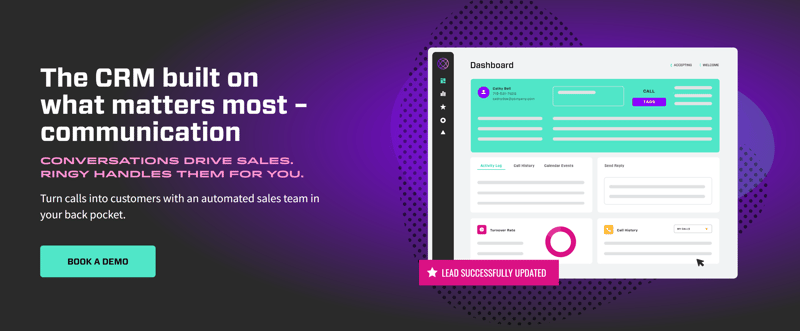
Okay, blatant plug, yes.
Don't knock a guy for trying, especially if he's got the facts to back it up.
Here's why Ringy is, in our, oh so humble opinion, the number one email integration CRM on the market:
- The strongest automation capabilities around
- A 360-degree customer view (not just email)
- Email scheduling
- Email and SMS drip campaigns
- A library of pre-written templates to get you started
- Or the option to create your own templates
- Track email open rates and response rates
- A master switch allows you to put campaigns on hold and take a vacation
Pretty sweet, right?
Click here to learn more about Ringy's powerful CRM email integration.
2. HubSpot
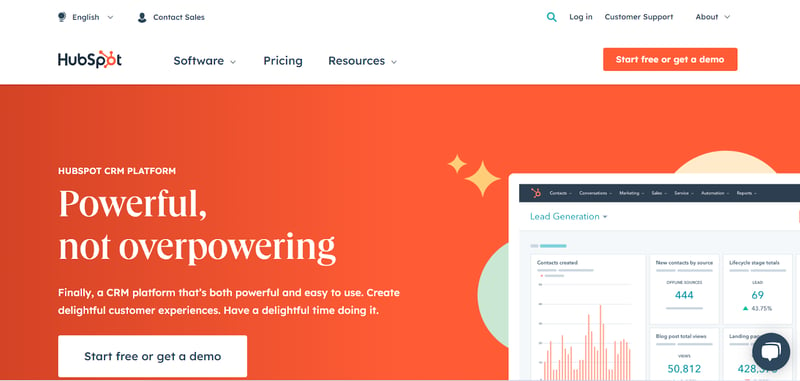
We crapped on free CRMs pretty hard just before, and though what was said was completely true, if you must get a free CRM with email integration, let it be the HubSpot CRM.
The free version of the HubSpot CRM is pretty good, and it does allow you to send and receive emails and track things like open rates.
If you really want to take advantage of the HubSpot CRM email integration, you'll need to upgrade to a paid plan (told you).
For example, you're limited to just 200 notifications per month on the free plan (for email open and response rate tracking), so you hit a wall pretty quickly.
Hit that sign-up button and drop a bit of cash, though, and you'll get:
- 5000 email templates
- 5000 email snippets
- 2 pipelines
- 5000 sequence and 500 emails per day (available on Professional and Enterprise plans)
3. Freshsales
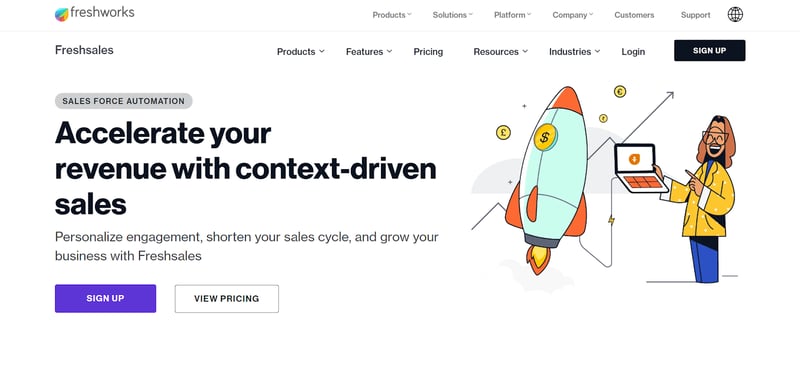
Freshsales, a CRM built by parent company Freshworks offers a suitable CRM email integration as well.
You can run outbound email campaigns, sync both incoming and outgoing mail, craft and test email templates, and access insights on email effectiveness.
So, basically all of the things a CRM email integration service should do.
4. Pipedrive
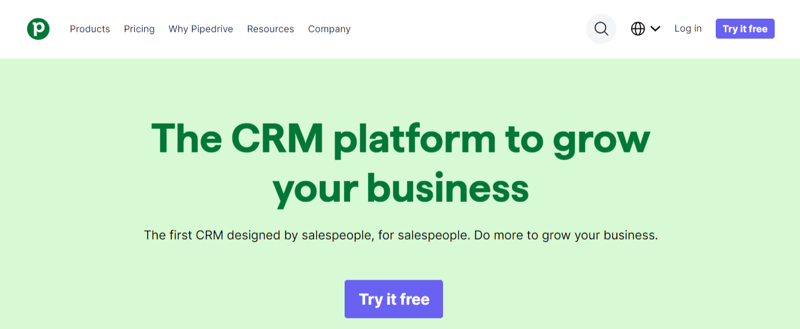
Pipedrive's email integration is reasonably sophisticated and should be suitable enough for most sales organizations.
You can monitor incoming emails within the CRM as well as send them, but you can also send and reply within your email client and still have them synced to each deal.
All of the tracking functions we've discussed are available on paid plans, and you can set up templates, email signatures, and time-saving automation rules.
5. Copper
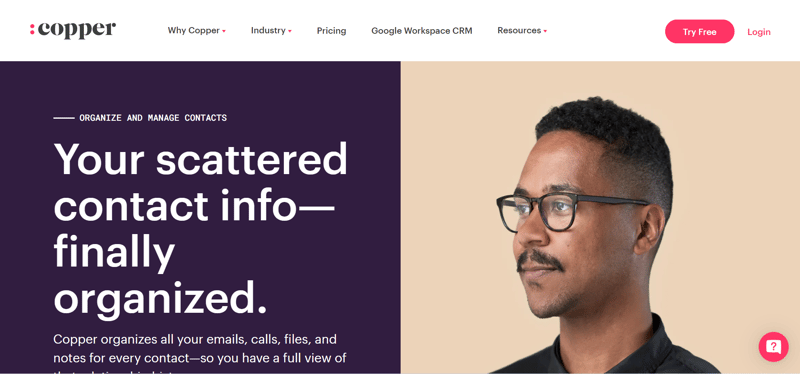
Copper does things a little bit differently.
Its email integration is specific to Gmail (sorry Yahoo fans), and it actually sits inside Gmail itself rather than the other way around.
The feature set is fairly similar to most other CRMs though:
- Instant notification for email opens
- Scalable outreach with mass emails
- Email engagement tracking (open and click rates)
6. Insightly
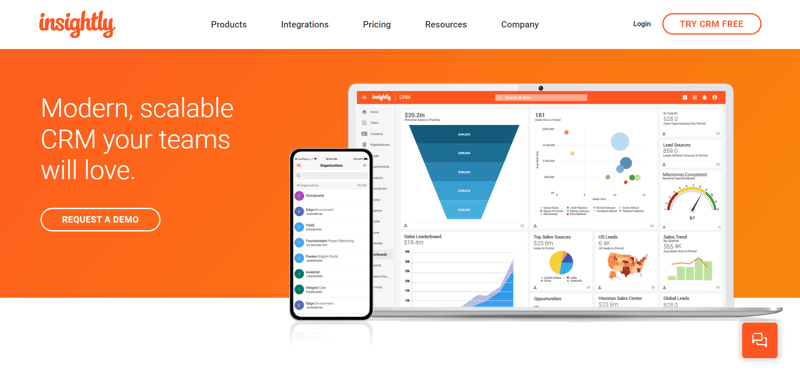
Insightly offers a robust CRM with seamless two-way email sync, email tracking, and customizable templates. Manage projects alongside your sales pipeline and track email engagement to optimize communication.
Features:
- Two-way email sync: Automatically syncs emails between your inbox and Insightly, so you can see all your email communication with your contacts in one place.
- Email tracking: See when your emails are opened and clicked, so you can follow up with leads and customers at the right time.
- Email templates: Create and save email templates for common messages, such as sales pitches and follow-up emails.
- Mass email campaigns: Send mass email campaigns to your contacts and track the results.
7. ActiveCampaign
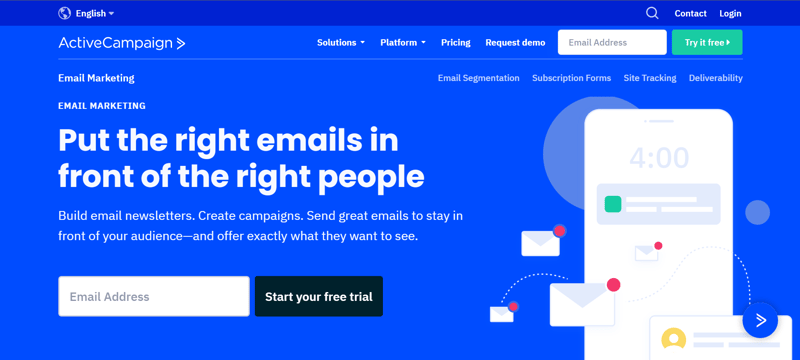
ActiveCampaign shines with its built-in email marketing platform, allowing for targeted campaigns, automated workflows based on user behavior, and detailed campaign reporting. Its CRM seamlessly integrates with email features for a unified customer experience.
Features:
- Built-in email marketing: ActiveCampaign includes a powerful email marketing platform, so you can create and send targeted email campaigns to your leads and customers.
- Email automation: Automate your email marketing with triggers and workflows, so you can send emails based on specific actions, such as when someone visits your website or signs up for a form.
- Email segmentation: Segment your contacts into lists based on their interests and behavior, so you can send them more targeted emails.
- Email reporting: Track the results of your email campaigns with detailed reports, so you can see what's working and what's not.
8. Nutshell
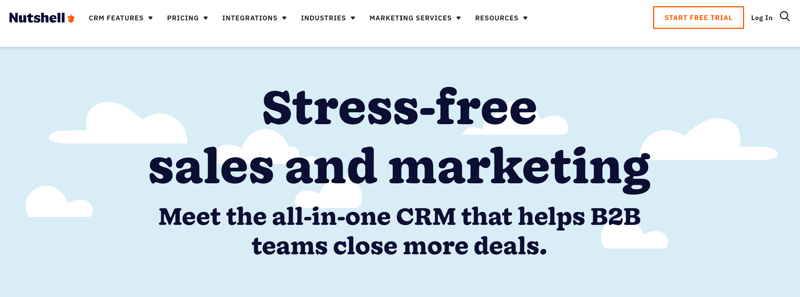
Nutshell prioritizes ease of use and affordability, making it ideal for smaller teams. Enjoy two-way email sync, email tracking, and customizable templates to manage your customer interactions efficiently without a complex setup.
Features:
- Simple and easy to use: Nutshell is a great option for small businesses that are looking for a simple and easy-to-use CRM.
- Affordable: Nutshell is one of the most affordable CRM options on the market.
- Two-way email sync: Nutshell syncs emails between your inbox and Nutshell, so you can see all your email communication with your contacts in one place.
- Email tracking: See when your emails are opened and clicked, so you can follow up with leads and customers at the right time.
- Email templates: Create and save email templates for common messages, such as sales pitches and follow-up emails.
8 Best Pieces of Advice on CRM Email Integration

Here's the thing about CRMs that offer email integration:
They're in no short supply.
Here's the other thing about those CRMs:
Not all of them are that great. At the very least, some are better than others. But how do you tell?
Here's how:
1. Watch Out For Volume Costs
The thing about email, in general, is that it's free.
You can send as many emails as you like (though many email clients have an upper limit, usually around 100), and not pay a thing.
In the CRM world, this isn't always the case.
In fact, many CRM companies charge per email sent, though it's usually a pretty nominal cost. This essentially pays for the benefits you receive from the CRM email integration (like tracking and analytics).
Still, it pays to be wary of these costs.
A CRM that costs just $35 a month but charges 1c per email might be less cost-effective than the one that charges $109 but only $0.001 for each send.
Do the math on your projected monthly email send volume before hitting buy.
2. Check For Appropriate Insights
We discussed earlier that many CRMs offer some pretty cool reporting and analytics with their email integration.
You should bear in mind that those benefits tend to belong to the most sophisticated of CRMs, and certainly aren't a given.
Some CRMs allow you to integrate your email but don't offer such insights, or might tell you the open rates on your email campaigns, but do not provide instant notifications when a prospect opens your email (important for smacking down your response times).
Prioritize finding a CRM with email integration that gives you the insights you need, and if in doubt, go for the one with the most robust analytics (better to have them than not, especially if you plan to scale and grow).
3. Confirm Compatibility
This should be a bit of a no-brainer, but people do still get caught out.
The problem is this:
Not every CRM solution offers integrations for every single email client.
Take Copper, for example, which does a great job of working with Gmail, but that's about it.
Now, most CRMs will be compatible with all of your ‘standard' email clients, so if you're a Yahoo, Gmail, or Outlook person, you shouldn't have a problem (though it's worth confirming).
If you're using a client that's, shall we say, less than common, then dig deep to make sure the CRM you're looking at plays nicely with your current system.
Otherwise, you could find yourself throwing several hours down the drain trying to switch over.
4. Analyze Ease of Use
Nobody has time to spend 20 hours pouring through onboarding documentation, training videos, and setup wizards.
We just want to get in and get started.
It would be wise, then, to spend a bit of time looking into a platform's usability, in terms of its:
- General ease of use
- Learning curve
- Onboarding process
Here are a few questions to ask during your CRM demo:
|
General ease of use |
Learning curve |
Onboarding process |
|
What are the main functions I'll be using on a daily basis? |
How long is it going to take me to learn this tool? |
What does the companies new customer onboarding process look like? |
|
Are these functions all able to be accessed from one page? |
Am I able to get started relatively quickly and learn more as I go? |
Is there a cost involved for onboarding? |
|
How deep do the menus go (deeper means more difficult)? |
Can I roll this out easily at scale? |
What is required from me to get started? |
|
Does the CRM have a mobile app? |
Does the company offer easy-to-digest resources for further learning? |
Can I easily access learning resources such as videos, so I don't have to commit to a specific time? |
|
Can I run the CRM in a browser window, or do I need to have it installed on my computer? |
||
|
Does the CRM use a common language, or does it use complex made-up names to describe its features (yes, it happens)? |
5. Look For Suitable Support
Whilst choosing the CRM that's easiest to use can be a smart move for many, this can often be at the detriment of functionality, and so you're probably going to need to get some help at some point.
Even if you do choose one that's fairly simplistic, things can pretty easily go awry, and we aren't all software whizzes, are we?
With all of this in mind, one of the factors you should consider when assessing different CRMs is the support they offer.
Ask questions such as:
- Is support offered 24/7?
- Are there additional costs involved in accessing support?
- Do I get a dedicated rep?
- What methods of support are available? (email, phone, online chat)
6. Seek Out Alternative Features
A CRM email integration service is not the only one that's helpful for sales teams looking to amp up their outreach processes.
Many capable CRMs offer SMS messaging (which can typically be combined with email sent in the same sales sequence), as well as integrations with popular social media platforms used in sales such as LinkedIn and Twitter.
We'd highly recommend finding a CRM that offers this functionality, as embracing a multichannel sales approach is sure to bolster your efforts.
After all, 73% of customers will use more than 5 channels when making a sales decision, so you'd do well to be everywhere!
7. Prioritize Automation
Automation is the saving grace of the inside sales world.
By automating routine tasks such as call notes, email reminders, and indeed, email and SMS sends, your reps can save tens of hours every month, reclaiming this time to, you guessed it, sell more stuff.
8. Make Sure The Platform Is Secure
A major problem you'll find when using a free CRM with email integration is that it lacks enterprise security features.
Why is this an issue?
Because you're storing customer information in your CRM. Details such as emails and phone numbers, but also very often details of purchases, key decision-makers, and internal business processes.
There is an unspoken expectation from your customers that you're keeping this data safe from hackers, and storing it on an encrypted database.
Make sure the CRM you choose to go with meets those requirements, and you will too.
Conclusion
All sounds pretty good, right?
With just a simple CRM email integration, you can work faster (not harder), gain stronger insights into email efficacy, A/B tests, automate routine activities, and ultimately sell more stuff.
What's not to love?
Perhaps a better question is what else is there to love in a solid CRM solution? Find out today by booking a demo with one of the Ringy team.

Skyrocket your sales with the CRM that does it all.
Calling? Check. SMS? Check. Automation and AI? Check. Effortlessly keep in touch with your customers and boost your revenue without limits.

Take your sales to new heights with Ringy.
Sales in a slump? Ringy gives you the tools and flexibility you need to capture leads, engage with them, and turn them into customers.
Subscribe to Our Blog
Enter your email to get the latest updates sent straight to your inbox!
Categories
Related Articles


















